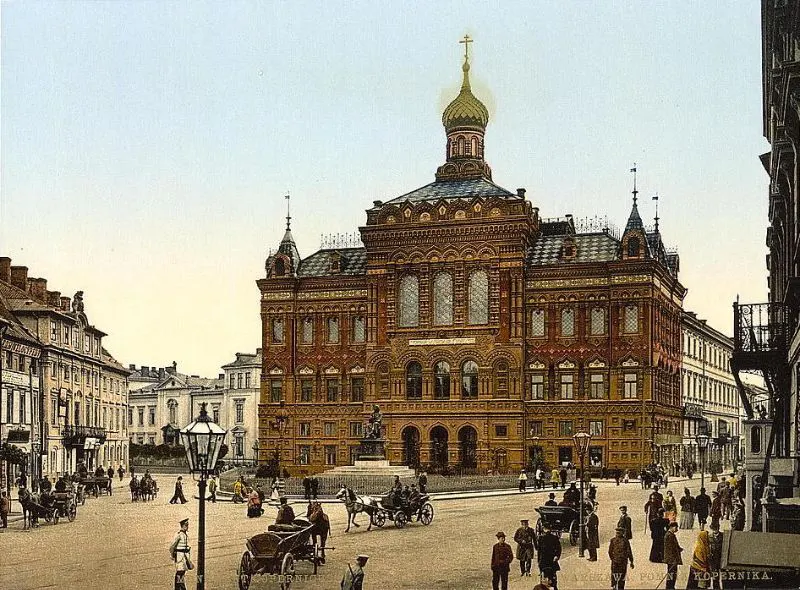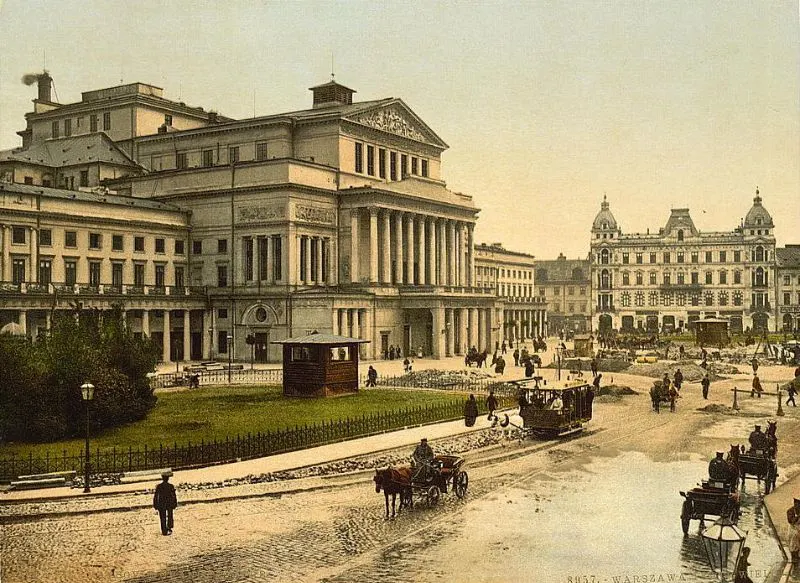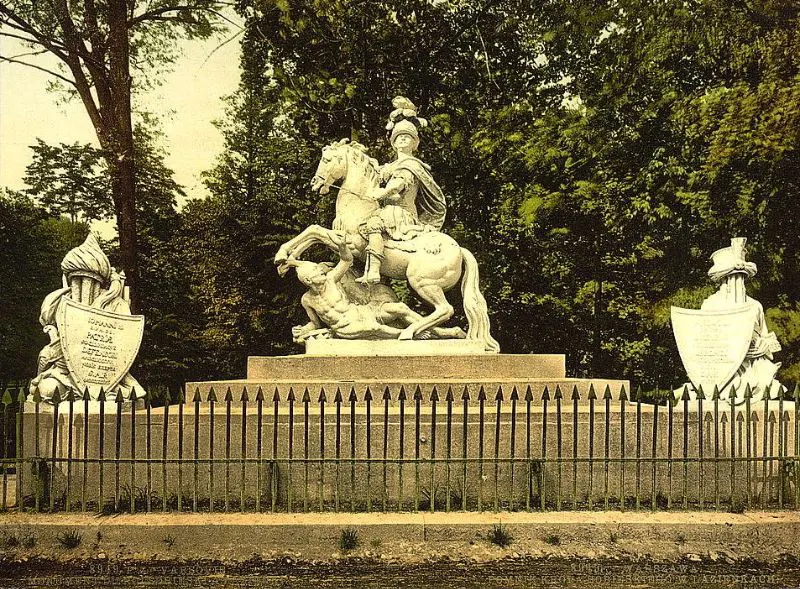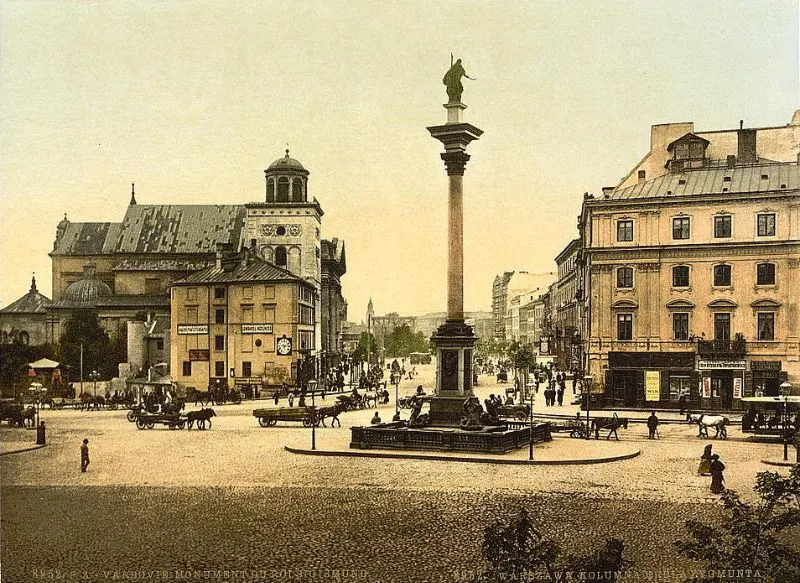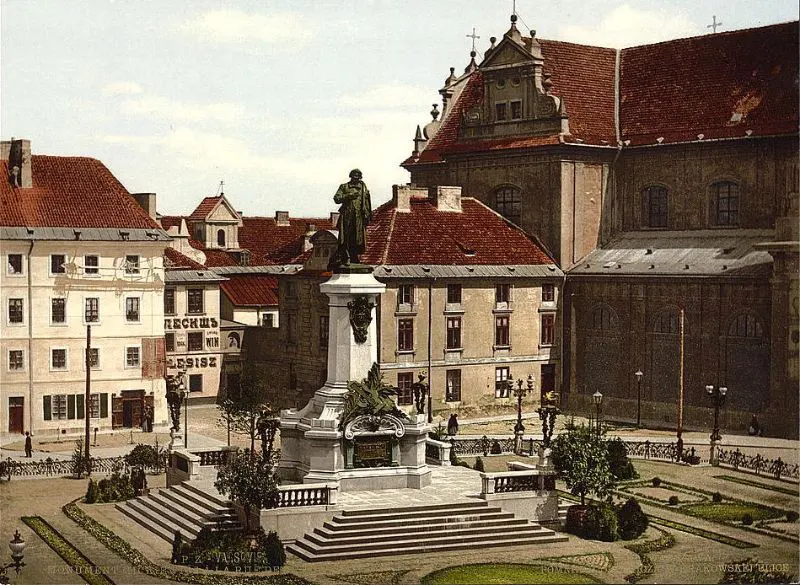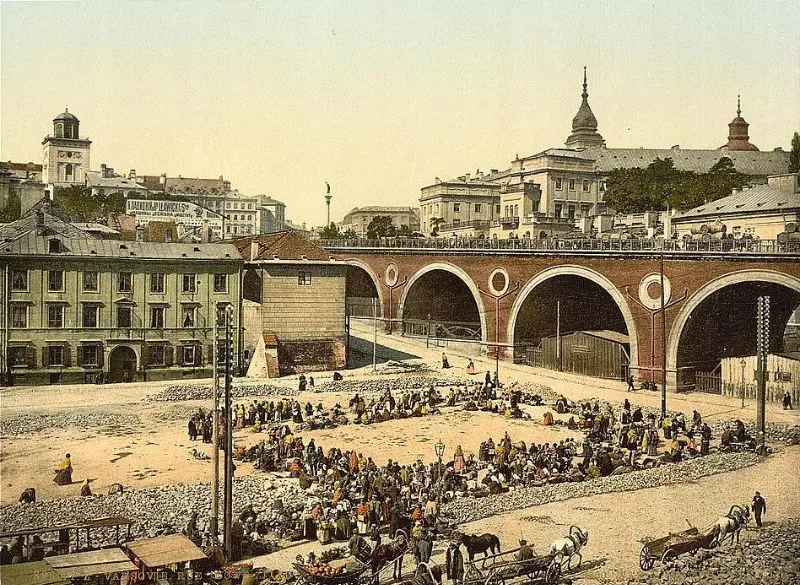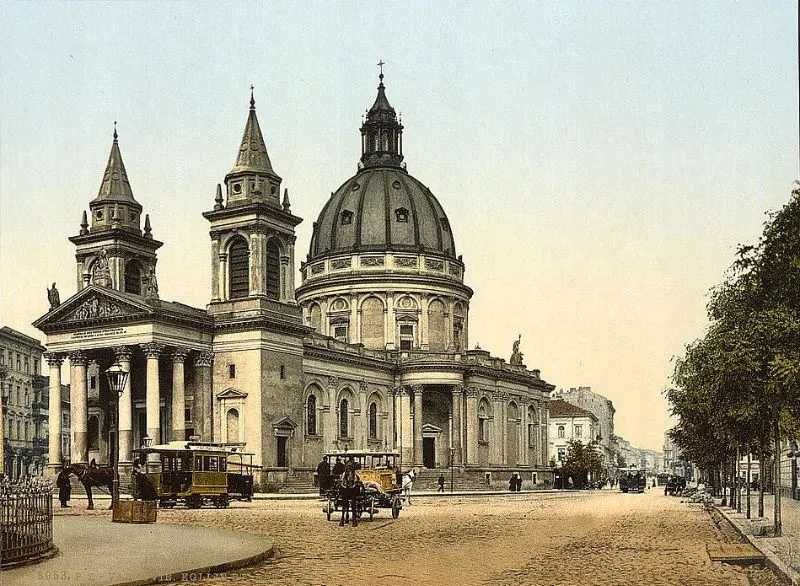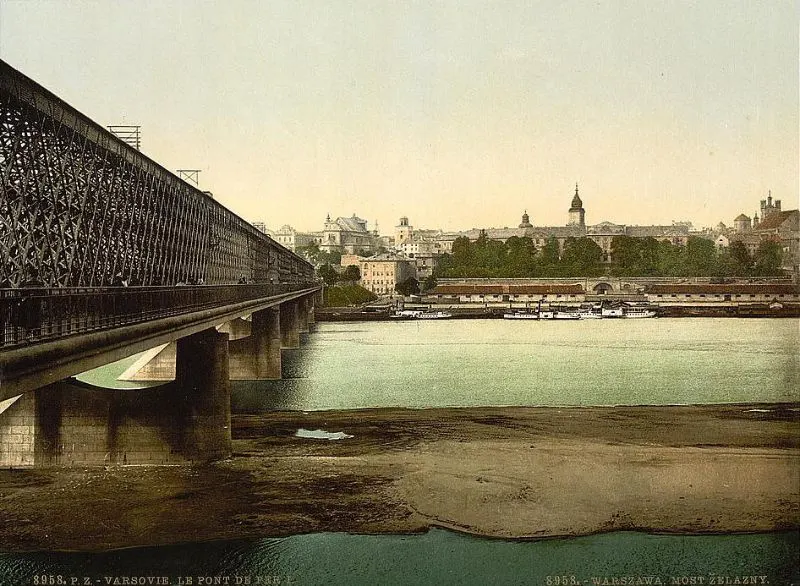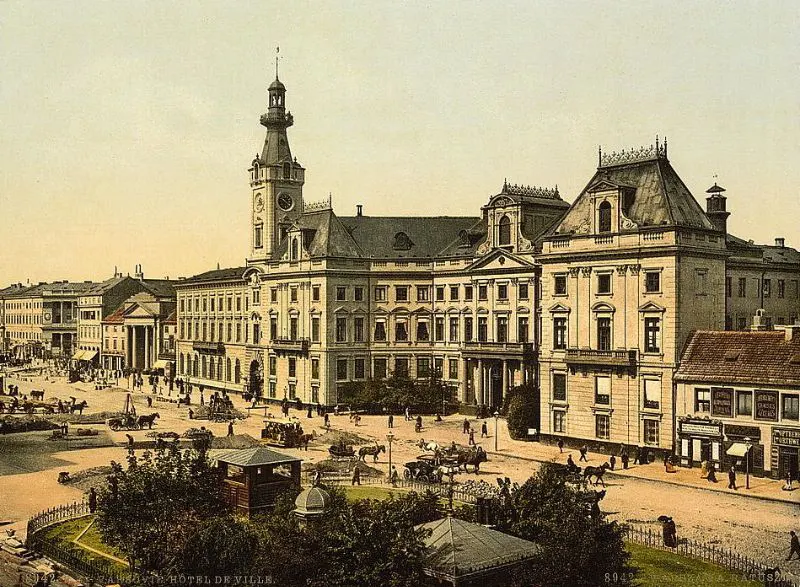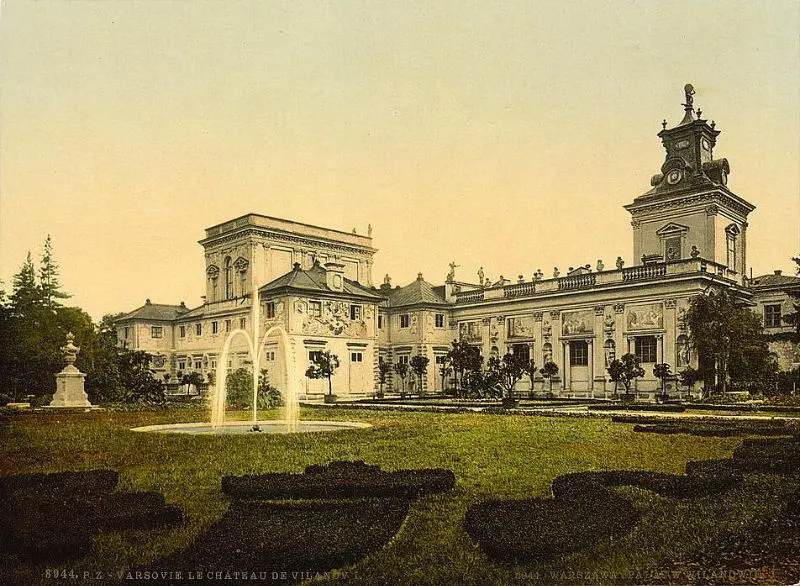Under the Congress Kingdom of Poland (1815–30), formed by the Congress of Vienna and ruled by the Russian tsar, real national independence remained an elusive goal, and Warsaw figured prominently in struggles to throw off foreign domination. The November Insurrection that sparked the Russo-Polish War of 1831, in which the Poles held the initial advantage, ended with the storming of Warsaw’s defenses and the initiation of 30 years of military rule. Economic growth, however, continued, and by the mid-19th century textile, metal, and tannery industries were well established and the city had become the center of a continent-wide rail network. Growth of railways turned Warsaw into an important railways hub, as lines were opened to Vienna (1848), Saint Petersburg (1862), Bydgoszcz (1862), Terespol (1867), Kovel (1873), Mlava (1877), Kalisz (1902), along with several shorter lines. In 1875 and 1908, two railway bridges were built. In 1864, the first iron road bridge on stone supports, Most Kierbedzia, opened. It was one of the most modern bridges in Europe at the time. Today, the Śląsko-Dąbrowski bridge lies at the same supports. Only then the city’s authorities started to rebuild Praga, which was heavily damaged during the Kościuszko’s and November Uprisings, as well as by Napoleon’s war. In 1862, the university was opened again, in 1898 the Nicholas II Technical Institute (the Warsaw Technical University’s predecessor) was established. Overall, Warsaw flourished in the late 19th century under Mayor Sokrates Starynkiewicz (1875–92), a Russian-born general appointed by Tsar Alexander III. Under Starynkiewicz Warsaw saw its first water and sewer systems designed and built by the English engineer William Lindley and his son, William Heerlein Lindley, as well as the expansion and modernization of horsecars, street lighting and gas works. Starynkiewicz also founded the Bródno Cemetery (1884), still one of the biggest European cemeteries. As a remembrance of the President, one of the Warsovian squares bears the name of Starynkiewicz, even though he represented the Russian authorities. Warsaw’s development, however, was accompanied by an intensive assault on Polish national identity. A period of Russification was launched, and Varsovians abandoned national politics for a period of “positivism,” which aimed to preserve Polish culture at all costs. The first Russian Empire Census of 1897 recorded Warsaw’s population as 61.7% Polish, 27.1% Jewish, 7.3% Russian, 1.7% German, and 2,2% others. According to the 1897 census, Warsaw was the third largest city in the Russian Empire (after Moscow and St. Petersburg), and the largest Polish city located in the Russian partition of Poland. In 1904, the first power plant was built. The city installed electric street lamps and, in 1908, opened the first electric tram route. Like London, Warsaw’s population was subjected to income segmentation. Gentrification of inner suburbs forced poorer residents to move across the river into Praga or Powiśle and Solec districts, similar to the East End of London and London Docklands. Poorer religious and ethnic minorities such as the Jews settled in the crowded parts of northern Warsaw, in Muranów. (Photo credit: Library of Congress / Wikimedia Commons). Notify me of new posts by email.
Δ Subscribe

